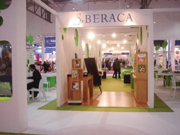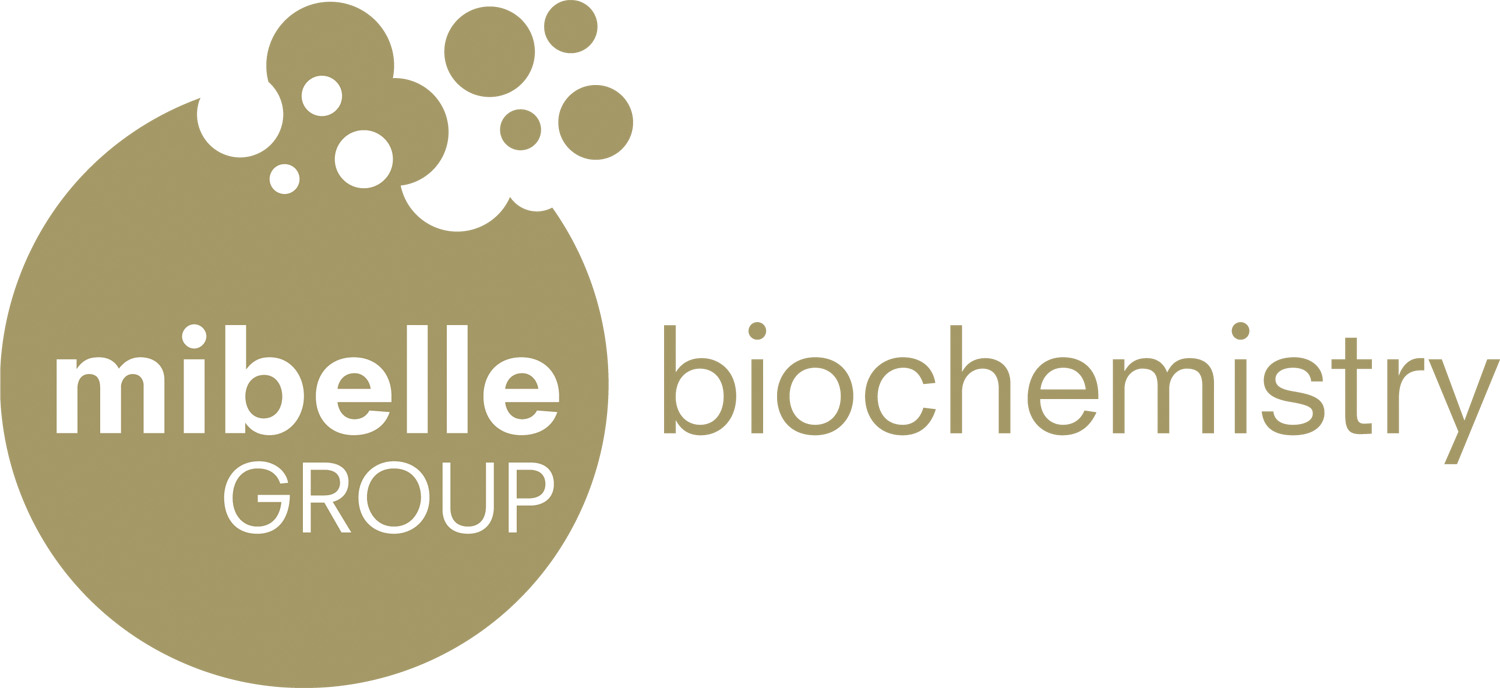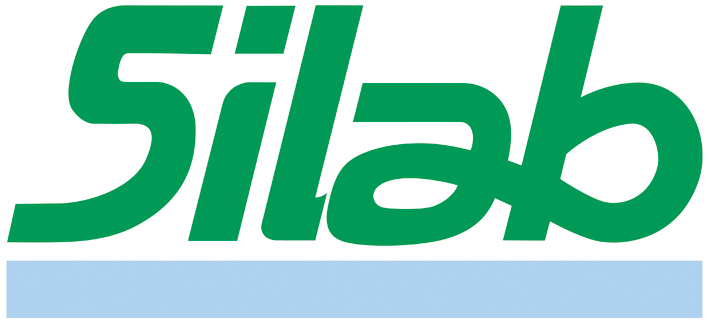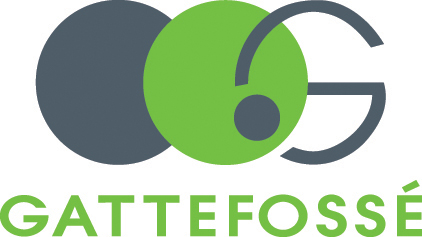It may have been 1,000 visitors down on last year’s event in Paris but with 6,850 unique visitors in Milan in-cosmetics 2011 (29-31 March) was by far the best attended show ever outside Paris, with one third of visitors being Italian. SPC reports
In terms of size in-cosmetics 2011 in Milan was the biggest ever – in fact it’s been growing for the last six years – with a lighter feel and better acoustics than in previous years.
“The show felt different,” says Richard Hesk, group exhibition director for in-cosmetics at Reed. “It’s a very tangible thing to see what seemed to be business going on in the booths and every supplier I spoke to endorsed this.” The quality of the visitors was also widely commented on. And with the average stand size up from 20 to 25sqm, Hesk noted that exhibitors had really worked to get the most out of the space, with many more meeting areas with tables on stands than in previous years encouraging visitors to stay for longer. Hesk also thinks the earlier 9am start on two of the three days helped people schedule an optimum number of meetings. Some in the industry have suggested there’s so much to see at the show that perhaps four days are needed but Hesk says they will be sticking with three.
Ancillary features and events were also well attended. “There were a record number of exhibitors involved in the Innovation Zone and there seemed to be a real appetite to go to that area to check out what’s new and almost to create a route map,” says Hesk.
Sustainability focus
As expected, sustainability was a key theme at in-cosmetics 2011. “We’re at the show to assess where sustainability is in terms of distributors and in terms of other delegates here,” commented Bob Norman from GreenPalm, a sustainable palm oil trading platform. “I’ve certainly seen a big change since last year when we visited Paris. Sustainablity was discussed but not in the same terms. We’ve had a quick tour of some of the booths and there is a lot of terminology being used with regards to sustainability and nature.”
Interestingly, there was less talk about ‘green’ as an overarching topic than at previous shows. Instead, this year’s conferences and in-focus area, sponsored by Beraca with SPC as media partner, looked at the many different ways in which companies can minimise their negative impact on the wider world, or indeed have a positive impact, a move exhibitors seemed to welcome.
“I think it’s quite important to distinguish between organic and sustainable, because sustainability encompasses so much more,” noted Norman. “Yes there are environmental and biodiversity criteria, but there are also the social criteria.”
“It’s very hard to look at the whole package, because it’s so big, so I think companies tend to hone in on a segment of the whole package,” agreed Earthoil’s Campbell Walter. “So The Body Shop, for example, will hone in on the community aspect of the project and what sort of benefits we’re delivering to the community by creating incomes for these farmers. They want to know how is the group organised, has everybody got an equal voice, is anyone dominating and is the money being used properly? And then you’ve got that whole environmental side, which we tick as well. That’s a secondary thing for them [The Body Shop], but another company will pick it up as the primary.”
Earthoil’s reformulated aqueous product line – whereby the essential oil is infused back into the water to replicate the oil’s true aroma in an aqueous state – was one of several sustainably sourced ingredients promoted at in-cosmetics.
Palm oil-free emulsifiers were a key focus for dr straetmans, which launched dermofeel GSC palm oil free, an anionic emulsifier claimed to stabilise the o/w interface. The product is formed from stearic acid derived from rape seed oil and citric acid, linked by a glycerol unit. To further bulk up its sustainability credits, the manufacturing process uses condensation reactions and does not involve any alkoxylated species, according to the company. The product can be used in a number of cosmetic applications and has excellent skin and eye compatibility.
“This product fits the current wishes of our customers – sustainability is a big story at the moment but companies need to remember to check their supply chains thoroughly before they make such claims. Sustainability is all about transparency,” explained Suzanne Jänichen, operational marketing manager for dr straetmans.
Eastman meanwhile introduced the first commercially available product created using its GEM technology, formally called the green biocatalytic process. Eastman GEM 2-ethylhexyl palmitate is a sustainably manufactured alternative to the commonly used ester for skin care products and colour cosmetics and according to the company uses 52% less CO2 emissions to manufacture. Furthermore Eastman says there is a 59% reduction in energy consumption due to the low temperatures used during manufacture, a 93% reduction in waste as there is no clean-up process needed and a 100% reduction in process water consumed.
“We created the product to meet the rising consumer and brand desire for sustainably manufactured cosmetic ingredients,” said Marcie Natale, biocatalysis platform manager, Eastman. “Natural and green are very popular at the moment but something that is green is not always sustainable. Here we have done both. Our goal is to look into other areas such as surfactants as customers are asking for green versions.”
Using novel technologies to improve sustainability levels was also a key focus for Akzo Nobel, which launched a new line of sustainable polymers at the show. Created from technologies used in the company’s cellulosics division, with derivatives including ethyl hydroxyethyl cellulose (EHEC), methyl ethyl hyroxyethyl cellulose (MEHEC) and hydrophilically modified ethyl hydroxyethyl cellulose (HM-EHEC), the Structure Cell range features four naturally derived, water soluble polymers. The company says the launch marks the first time the technology has been used in the personal care market and the products can be used in a variety of water-based personal care systems as multifunctional thickeners, texture modifiers, emulsion stabilisers and rheology modifiers and are Ecocert compatible.
“There has been a great deal of interest in the products,” said Andy Girdharry, global marketing manager, hair care. “Customers like the sustainable element as well as the performance benefits – the products offer a 10-15% increase in performance. We are seeing a trend in customers wanting more for their money but no performance cutbacks.”
This year’s event was the first since Stephenson Personal Care began offering soap bases from sustainable palm oil in August 2010. “The traditional supply of soap base is from plantations in Malaysia and Indonesia, where they separate the oil into fatty acids to produce the base,” explained general manager Peter Ellis. “At this point and for the foreseeable future they aren’t able to segregate enough oil in order to produce soap bases that are sustainable. But because we are very much a batch manufacturer, we can take relatively small volumes of oil and convert them into soap. So we’re not relying on hundreds of thousands of tonnes, we can start with as little as ten tones.”
Arkema meanwhile showcased its Oleris product range for the first time. Described as 100% bio-sourced and ultra pure, Oleris products are used as intermediates in the synthesis of fragrance, cosmetics and personal care products. In addition, the company launched Orgasol Green Touch. Said to be ideal for pressed powder application, the ultra-fine powder is promoted as being 100% derived from renewable raw materials.
A truly international affair
A total of 560 exhibitors from 41 countries welcomed the 6580-strong crowd of visitors to this year’s in-cosmetics in Milan. Of these, 393 were main stand holders and 167 were sharing stands. Among exhibitors France had the strongest presence (26%), followed by Germany (15%), Italy (15%), US (11%), China (10%), UK (6%), Switzerland (5%), South Korea (5%), Japan (4%) and Belgium (3%).
Of visitors, unsurprisingly the majority came from Europe (70%), with 32% from Italy, 9% from France, 7% from Germany and 5% from the UK. Non-EU Europe made up 8% (including Russia, Poland and Turkey) while Asia Pacific accounted for a further 8%, with South Korea accounting for 3% and Japan, Thailand and India each contributing 1%. A further 5% of visitors attended from North America, 5% from the Middle East and Africa and 4% from South America, with Brazil accounting for 2% and Colombia 1%.
Half of all visitors held senior positions in companies and 24% were involved with development/formulation, with many others holding positions in purchasing, distribution, manufacture and fundamental research.
Jeen focused on green processing with the launch of a line of cold water dispersible wax systems, which simultaneously eliminates the need to heat both oil and water phases, reducing manufacturing time, carbon footprint and cooling-water consumption.
Other companies offered natural alternatives to a range of ingredients. New from Sabinsa was SabiLize, a natural antimicrobial blend of cinnamon oil, clove oil, lemongrass oil, monolaurin and thyme oil, while Cremer Care introduced CremerCOR PG4 cocoate organic, a 92% organic non-ionic surfactant, moisturiser and skin conditioner certified by Ecocert.
Skin care solutions
Skin care is always a hot topic and plant-based stem cells continued to be a popular trend at in-cosmetics, tapping into both the demand for sustainability and multifunctional anti-ageing ingredients. Mibelle added a fourth product to its PhytoCellTec stem cell range, this time based on argan.
Mibelle claims the product is the first cosmetic active ingredient to target the dermal stem cells in the skin; it found these cells have the ability to self-renew, induce the formation of hair follicles and migrate into the interfollicular dermis where they are formed into fibroblasts which help regenerate the extracellular matrix. The result, says the Swiss company, is revitalised and protected dermal skin cells, a reactivation in the skin’s youthful functions and a reduction in the appearance of lines and loss of firmness.
Sederma meanwhile has created Resistem, a new anti-ageing plant stem cell ingredient inspired by the natural phenomenon of hormesis, where the skin cells and tissue create a natural defence system following mild stress. Using a new technology to extract and produce plant stem cells, Resistem is claimed to mimic this process, helping to reduce the level of ageing agents in the skin whilst also reducing toxin-induced microinflammations. As a result skin is soothed, looks more even and the appearance of redness is reduced.
Protection from environmental aggressors was a popular claim for many skin care ingredient launches at this year’s event. New from Symrise was SymFinity 1298, an Echinacea purpurea extract said to increase skin cells’ resilience to stress and environmental aggressors to prevent premature ageing of the skin and promote an even complexion. The triple-effect ingredient also acts as an antioxidant.
Gattefossé introduced Malt Secrets, a new antioxidant and anti-ageing ingredient derived from malted barley and created, unusually for cosmetics, in partnership with a French brewing company, which developed the extraction purification process from which Gattefossé developed the ingredient. Malt Secrets is a blend of polyphenol dimers which possess a high level of oligomeric proanthocyanidins (OPCs), a potent antioxidant and ferulic acid, which has anti-stress, anti-ageing, photoprotection and depigmentation properties. The ingredient is water-soluble and can be used in a variety of anti-ageing and skin protecting applications including skin creams, sun creams and aftersun products, protective hair care products and lip care. It has also been validated by Ecocert Greenlife and is awaiting natural approval from NPA.
Lipo Chemicals wins inaugural ingredient award
Lipo Chemicals snapped up the Innovation Zone Best Ingredient Award at in-cosmetics in Milan for its Liposhield HEV Melanin. The vegetable-derived material is designed to protect skin from high-energy blue or violet light that may result in premature ageing.
“We’re obviously delighted to have won this prestigious award. A great deal of hard work has gone into making Liposhield HEV Melanin a success and it feels great to have this recognised by so many industry experts,” said Christine Gehres, vp global marketing at Lipo on winning the award.
In second place was NeoPharm with Defensamide, a skin AMPs stimulant derived from natural amino acids and said to reinforce the skin’s natural barrier system and facilitate improved moisturisation. Third was ISP with Capsaline 14, a synthetic peptide designed to target and boost the expression of capsase-14, believed to be an important component in the skin’s natural defences.
The awards were introduced this year to recognise novel ingredients with great benefits to end users, and organiser Reed says selecting the winner wasn’t easy. Judging between eight strong competition finalists was a panel of industry experts including Amy Fu, senior research scientist, global skin care, Alberto Culver; Linda Marshall, president and owner, Elysée Cosmetics; Marc Pissavini, director, basic & applied research and technical services, Lancaster at Coty R&D Center, Monaco; and Theresa Chen, associate director, global growth strategy and technology platform, Johnson & Johnson Consumer Companies Inc.
The ingredients were judged on how well they combine science and features in a way that demonstrates substantial benefits to manufacturers and end users when compared with existing ingredients.
Cathy Laporte, in-cosmetics group marketing manager commented: “Although there could only be one main winner, all the ingredients showcased in the Innovation Zone and indeed across the whole exhibition are strong in their own right and I have no doubt that they will go on to be used very successfully in cosmetic and personal care formulations around the world in the not too distant future.”
Alguard from Frutarom – a naturally sulphated polysaccharide, rich in negatively charged glucuronic acid residues – offers skin three levels of protection. The ingredient, derived from red microalgae (Porphyridium sp), protects skin directly from irritants and oxidative damage, counters bacterial infection and protects the skin from UVB radiation.
Jan Dekker also took inspiration from nature’s protective powers for its new anti-ageing active, GemmaNova. Described as a new generation of anti-ageing ingredient, GemmaNova is derived from the safflower bud, claimed to be a rich source of phenolic compounds, amino acids, which help boost collagen synthesis, and a-tocopherol, a potent antioxidant. The company has used a new contamination-free cultivation method called Bud Nest which it says increases the potency of the safflower bud properties as well as making the product suitable for anti-allergy care; the release of β-hexosaminidase was inhibited by 49.5% when the buds were grown in this controlled environment.
Greentech introduced Setiline, a new active promising a global effect against ageing. It is said to act simultaneously and significantly in vitro against glycation in the dermis and skin keratinisation in the epidermis, maintaining skin suppleness, firmness and elasticity. In addition tests on volunteers were said to show a decrease in wrinkles of nearly 10%. Meanwhile the company’s Somitine was promoted as an energising active improving complexion radiance, supported by chromometer and Goniolux tests. Additional studies are in progress. Greentech also added new support for its Silidine, an active targeting heavy legs syndrome, with Siascope tests demonstrating a 19% reduction in skin redness.
Seppic’s SurviCode [INCI: Sodium cocoyl alaninate] is designed to maintain skin integrity by protecting epidermal stem cell functionality. In vitro tests support SurviCode’s claimed preventative action on the effects of three sources of stress: UV rays, oxidative stress and anoikis, cell death resulting from the loss of cell adhesion to the basal membrane.
Similarly, regenerative action is claimed as a principal benefit of Naturex’s new active, Dragon’s Blood, extracted from the sap of the Amazonian Croton lechleri tree. This sap, called Sangre de Drago, contains taspine, which stimulates the early phases of wound healing and has traditionally been used as a healing agent. Studies have found that the extract increases fibroblast metabolism by 56% while inhibiting the JNK pathway to provide an antioxidant effect.
“This ingredient has a good name and story – the historical use of the products for healing for marketing – but then there’s also proven efficacy from the R&D perspective,” Naturex’s Antoine Dauby told SPC.
For an immediate tensor effect, Silab launched Instensyl, a biopolymer designed to instantly lift and smooth. Based on new technology making use of sugar cross-linking agents, Instensyl’s 3D molecular structure quickly adheres to the skin’s surface, spreading to form a viscoelastic film in five minutes, the effects of which are said to last for up to four hours.
Meanwhile Croda showcased the latest addition to its portfolio, DuraQuench IQ [INCI: Potassium cetylphosphate (and) isostearyl isostearate (and) behenic acid (and) cetyl behenate (and) cetyl alcohol (proposed)]. DuraQuench’s dual mechanism optimises skin moisturisation by forming an intelligent structural layer on the skin’s surface while regulating water loss from within by reinforcing the skin’s natural barrier. According to Croda, the ingredient adapts to work optimally depending on environmental temperature and humidity.

At Infinitec’s booth, first time exhibitor EG Active Cosmetics was promoting its patented maslinic acid, marketed as Maslínico, for use in high-end anti-ageing formulations.
“When you press olives there’s waste,” explained one of the Barcelona-based company’s founders, Elena Grau Monjo. “Using a patented extraction process, we can obtain this molecule, maslinic acid, from this waste material. It can be used in anti-ageing or in products for damaged skin. It works in two ways: it’s a natural anti-inflammatory and antioxidant, but it also stimulates protein turnover for a redensifying effect.”
Another first time exhibitor was Swedish company Biovelop, which specialises in separating out different fractions from cereal grains. The company has a food ingredients heritage and used in-cosmetics as a platform for its Avenacare oat beta glucan ingredient.
“We provide beta glucan in a liquid form and beta glucan has been shown to penetrate the skin and stimulate collagen production. But it’s also very soothing and it gets rid of redness,” said Biovelop’s Fredrik Bjurenvall. “It’s a new step for us going into cosmetics. We’ve obviously been researching it for a very long time, but we think that we have a very good product now, the first of many products for the cosmetics market. Colloidal oat is next on the list – oat peptides and oat oil potentially. They’re all there in the pipeline.”
Indena launched two new skin care ingredients: Xilogel, a film-forming, moisture regulating natural polysaccharide derived from tamarind (Tamarindus indica) seeds, claimed to improve skin elasticity; and Omegablue, a soothing agent for sensitive skin obtained via environmentally-friendly CO2 extraction from bilberry (Vaccinum myrtillus) fruits.
Also presented for use in applications for sensitive skin was Provital Group’s Caresoft, a new mechanism for sensitive skin that works through a mechanism of pH regulation. “There’s a market for products for sensitive skin – maybe not as huge as the anti-ageing market – but there is a market,” commented Provital’s Anna Balaguer. “Sometimes people don’t necessarily have sensitive skin, but they like to feel special and to have products created specifically for them.”
Soliance turned its attention to skin lightening with the launch of Axolight, an arabinoxylo-oligosaccharide rich solution that inhibits melanogenesis by targeting tyrosinase and TRP-1. Also new was Renewable Squalane, sourced from sugar cane or beet and developed in collaboration with US-based renewable products company Amyris. According to Soliance, the product avoids both the ethical issues surrounding shark liver oil squalane and the price variability and limited availability of the olive oil derived variety.
What the exhibitors said
“The show has been really busy – we presented in the innovation zone and have had lots of enquiries from that. There is a really global feel here with visitors and exhibitors and we are really happy.”
Sandra Meister, marketing & sales coordinator, Mibelle
“in-cosmetics is always an interesting show. It’s international and we’ve seen customers from all over the world. It’s also a great show for new business as visitors’ geographical profiles are so diverse.”
Li Ding, managing & scientific director, Kobo
“It’s been a very good show for us. The quality of our meetings has been very high and nothing has felt rushed or pressured. The attendance may be a bit less than Paris last year but the quality has been fantastic. Milan is a great city for the show too as it’s easy for everyone to reach.”
Olga Gracioso, head of marketing & communication, Sederma
“We’ve seen people from all over the world, and particularly visitors from the US. There haven’t been so many Chinese visitors this year but a lot of Koreans and Japanese.”
Laurent Schubnel, operational marketing manager, Gattefossé
“I think it’s been a bit quiet on all three days. It’s so close to Cosmoprof this year, but also not quite close enough. No company is going to fly their employees out to Italy and pay for them to take a week’s holiday between shows, especially in the current economic climate as nobody’s got the budget. If something like this happens again they should do what the IFSCC and in-cosmetics Asia are doing in Bangkok.”
IRA, administration manager, Kathe Andersen Citernesi
“What surprised me about this show is the breadth of international interest from every single corner of the world. We’ve had a lot of interest from South America - lots of Brazilians and we’ve had good conversations with companies from Mexico and Argentina – and a lot of interest from China and Europe and the States. One of the main reasons we’re here is to find distributors. The whole show has been above expectations.”
Fredrik Bjurenvall, business dev, personal care, Biovelop
Similarly Codif introduced Neurolight.61 G, claimed to treat the size and pigmentation of dark spots by inhibiting the action of the neuropeptide Substance P (SP). An aqueous extract of Pancratium maritimum, or sea daffodil, Neurolight.61 G has been found to reduce the surface of pigment spots by an average of 24.8% over a period of 84 days and clarify them by an average of 12.1%.
Also in this area Res Pharma introduced Pantrofina White. Based on Sicilian sumac, the active modulates each of the three phases of melanin synthesis to help combat hyperpigmentation, said the company.

Beraca sponsored in-focus
BASF was using know-how acquired through Cognis to expand into skin care, including sun protection for daily skin care products. The company already had the technical ability to formulate daily protective skin care but Cognis technology allowed it to suggest formulations with the kind of aesthetics required for such products. Also on show from the Cognis portfolio was a full set of formulations for sensitive skin. The company was also talking about the BB concept as a hot topic. “We will continue to use our core strengths to develop portfolios that fit consumer needs,” said the company.
Alongside the ingredients making great promises were exhibitors offering efficacy testing and claims substantiation. For example, Delfin Technologies used in-cosmetics Milan to launch a portable version of its skin surface hydration measurement device: the MoistureMeterSC Compact.
According to Delfin’s Aki Immonen, the company’s principal reason for exhibiting this year was to introduce the compact instrument to formulators. “When you’ve got the equipment to measure the skin and what your formulations can do to the skin, you can trial things and make small changes to your formulations to see how they work,” he explains. “Another reason is that the exhibiting companies need their claims substantiated. There’s also been quite a bit of interest in the MoistureMeterSC Compact for promotional applications in spas or beauty salons.”
Top to toe
Several companies responded to continued consumer demand for rapid weight loss by launching body sculpting actives. New from Codif was Pink PepperSlim. The concentrated oil from pink pepper berries is said to be different from traditional fat burners due to its pre-lipolytic action. The agent focuses activity on large lipid droplets, reducing their protection to make them more available to lipases. It also prevents small lipid droplets from becoming large lipid droplets, as small lipid droplets are easier to burn, multiplying its lipolytic action. Pink PepperSlim also stimulates microcirculation, said Codif.
From BiotechMarine came plankton extract-based Sculptosane, said to reduce adipose tissue expansion, remodel the ECM and reduce water in fatty tissues to tackle issues such as cellulite.
In addition, Res Pharma introduced Pantrofina Slim. Like the company’s new lightening product, the slimming complex is derived from Sicilian sumac, which inhibits preadipocyte differentiation and boosts antioxidant activity, while acetyl carnitine reduces existing accumulations and prevents new deposits.
Exhibiting on Impag’s stand, newcomer Phytodia showcased its first product Corolea Bio. A phyto complex from olive leaf and lady’s mantle extracts, its makers were claiming Corolea Bio as the first Ecocert certified organic slimming product on the market. The ingredient activates the mitochondria in the adipocytes via the TGR5 receptor to boost cell metabolism.
Tanning – with or without the aid of sunshine – was also on the agenda. Soliance’s Vegetan FL Creation, developed in partnership with fragrance house CPL Aromas, is a blend of DHA, surfactants and solubiliser made using Aromaguard fragrance technology, which reduces the levels of malodour molecules or modifies their smell perception.
In protection, EastHill showcased UVIR Block STCP, a composite powder of ultrafine titanium dioxide deposited on the surface of platy large particle titanium dioxide. As such, it boasts broad solar spectrum protection, simultaneously blocking UVA, UVB and IR rays. It also imparts a natural skin whitening effect.
For hair care, Solabia introduced a biomimetic ceramide to reinforce hair fibres. Rep’Hair is obtained via a solvent-free, green chemistry process from behenic acid and stearic acid and is said to provide both curative and preventative action on damaged hair while improving hair gloss.
What the visitors said
“For me, this is the most important event of the year. It is a great chance to be introduced to companies in the industry that you might not normally see. The show seems busier this year, and has been really useful in catching up with the industry and sourcing new suppliers.”
Cliff Lamb, buyer, Avon
“We came to meet new small, niche companies to get inspired as well as meet existing contacts. This year we have managed to meet a supplier from Japan and France who we have never had the chance to meet in person before.”
Thorsten Knappe, R&D manager, Henkel
“We were keen to learn more about bio products, sustainability and European trends in general and the show has been the perfect opportunity for that. We have met several interesting companies who we will definitely be contacting again.”
Kazuyuki Miyazawa, researcher, Shiseido
“This was my first visit to in-cosmetics and it was absolutely fantastic! I will definitely attend again.”
Lara Tersteggen, group manager, Beiersdorf
“The show was great; in-cosmetics is a high quality exhibition and very interesting. I come almost every year as I believe it’s the best show in the industry calendar.”
Domnica Cernasov, vp R&D, Coty
A growing segment within hair care is for products with anti-ageing effects and Istituto Ricerche Applicate (IRA) developed its latest product Trico-Hyal to cater to this market. Trico-Hyal uses cross-linked hyaluronic acid to create an acid cage that encloses an anti-ageing ingredient made from polyphenols to improve follicular activity and combat greying, and polynucleotides to stimulate cellular regeneration. IRA was promoting the ingredient as suitable for use in anti-hair loss and detoxifying hair care products.
Multifunctional hair care benefits were also a theme for Nalco (now Lubrizol) which launched Merquat 5210, the company’s first cross-linked polymer for conditioning products. When the polymer is in a solid state it acts as a wax but when it is in a wet state it can be used like a microgel bead with a feel similar in texture to silicone with improved slip. Nalco said it was marketing it as a polymer with multifunctional benefits suitable in all hair care products. In tests it was found to give an almost 90% improvement in wet combing, as well as 89% colour protection from 15 shampoos.
International Specialty Products (ISP) has a great reputation for its polymers for hair care but on this occasion was using the show to announce an alliance with flavour and fragrance company Takasago to develop the next generation of oral care innovations.
Based on ISP’s complex coacervation encapsulation technology and Takasago’s flavours, the partnership will help produce new flavour and sensory approaches. The companies will utilise the extensive R&D capabilities and global presence of both ISP and Takasago to share insights in developing products for customers in all key markets.
While there was much speculation about the future ownership of Azelis during the show following rumours that 3i had plans to divest the company, the distributor was also introducing a genuinely innovative powder to cream concept with potential for applications for skin care, sun care and colour cosmetics. Using technology in the form of a modified silica-based system developed by Evonik, the applications lab at Azelis has developed a flexible formulator’s toolbox to enable manufacturers to create a wide range of different products from a single set of base building blocks. Starting as powdered water (96% water, 4% silica), active absorbate is added and the two are rubbed together to produce an emulsion.
This wasn’t claimed to be a new raw material as such as it has been around for some time, but the concept was introduced as a completely new product format, and the possibilities are innovative, commercial and practical, said Evonik and Azelis. And that after all is what it’s all about.
Next year in-cosmetics will be back in Barcelona from 29-31 March.
“I’m really looking forward to it,” says Hesk. “We’re already wondering whether we’ll need another hall. We have to be realistic in view of recent mergers but at the same time there are also some new names. We had about 50 new companies this year coming from different geographies and different sectors.” Hesk acknowledges that this accounts for a small footprint and it takes quite a lot to make up for the loss of the likes of Cognis (now BASF) and Nalco (now Lubrizol) but says the show usually achieves a success rate of up to one third on getting new names back with their own stands in subsequent years.
The 2012 show is nearly a year away and we’ll be keeping you up to date with developments. But meanwhile you can catch up with more from this year’s event at cosmeticsbusiness.com.












